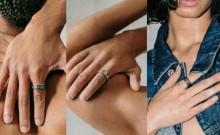When did you last see a woman’s name in a list of remarkable inventors? The fact that we live in a male dominated society is no news but women have always been as creative and determined as men. The only difference is that men at no point had to face any obstacles that women had to fight against. They were seldom given equal opportunities.
In fact, until a few decades ago, they were never encouraged to get education, formal trainings, etc too, which in turn presented very bleak or no chances for them to come face to face with the technical side of things. Likewise, patents too were always given to men while women were not even considered. Even when they tried to seek help to realize their idea, women were ridiculed by men. Their proposals were discarded as unworthy or too unimportant to pay attention to. It was never easy for women to get into the invention game. Nevertheless, they went on to invent some brilliant stuff that we use in our everyday lives!
• Mary Anderson: Windshield Wipers
Mary Anderson gave an everlasting fix to car drivers who had to stop every few minutes to clean their car’s windshields during rains, storms and snow. In the early 1900s, although cars were still a rarity, this problem was constant with drivers. This woman from Alabama took into consideration the dire need of a solution for this and invented the windshield wipers by 1903, which are now a standard attribute of every car.
She got the patent for her device in the same year. Just 10 years after she patented her invention, almost every car was seen with windshield wipers. What’s more, it was again a woman who first patented the Automatic Windshield Wipers in 1917, Charlotte Brigdwood.
• Stephanie Kwolek: Bullet Proof Vests
Stephanie Kwolek invented Kevlar, a light in weight, high tensile, five times stronger than steel, durable material that literally takes a bullet for you. She researched how to turn polymers into strong synthetic fibres. This material is an integral ingredient in manufacturing skis, brake pads, suspension bridge cable, helmets, hiking and camping gear. Most importantly, Kevlar is used extensively to make bullet proof vests. She earned a patent for this in 1966.
• Josephine Cochrane: The Dishwasher
Like most women, it bothered Cochrane that her domestic help constantly chipped and broke chinaware in her kitchen while washing them. The same nuisance led her to inventing what we commonly use today, the dishwasher. She received a patent for her dishwasher in 1886.
The dishwasher combined high water pressure, a boiler, a wheel and a wire rack. It is like the ones that are still used for dish drying in kitchens. Interestingly, during this time period, most houses did not even have a hot water system to run something like the dishwasher but Cochrane’s persistence and will made it an extremely popular item in households as well as public eateries, hotels, etc.
• Ruth Wakefield: Chocolate Chip Cookies
Ruth Wakefield served as a Dietician and Food Lecturer before she moved outside of Boston with her husband. Tired travellers often stopped by to grab a quick bite and get some rest. Once while preparing Butter Drop Do cookies for her guests, she ran out of chocolate. She took a Nestle chocolate bar and crushed it into the recipe thinking the chocolate would melt during baking and give the same result as baker’s chocolate. But the chocolate didn’t melt and held its shape and that’s how she accidently invented the globally loved chocolate chip cookie.
• Sarah E Goode: Folding Cabinet Bed
Inventing the folding cabinet bed made Sarah E Goode the first African American woman to receive a US patent in 1885. The bed could be easily tucked away and used as a desk during the day and folded as a bed by night! Goode, at the time ran a Chicago furniture store. Several versions of her original design are still made today. The Murphy bed, now widely sprung up some 15 years after the invention of the folding cabinet bed.
• Martha Coston: Colored Signal Flares
Martha Costen was widowed at a very early age; she was only 21 at the time. She accidently found the concept for colored flares in her late husband’s notebook. During that era (around 1847) the only way ships communicated was through colored flags, lanterns and screaming emergency codes to each other.
Costen worked with scientists and military office for about 10 years to perfect the design her husband ideated. She spent time trying to figure out how to produce flares that were long lasting, bright and simple to use. On an outing with her four children, while looking at fireworks, she got the idea of using pyrotechnic technology to flares. It worked. US Navy bought the rights for her invention. Her colored flare system was used expansively during the Civil War.

















![Limited edition Phone (3a) launched in India; what's special about it [read now]](https://data1.ibtimes.co.in/en/full/825642/limited-edition-phone-3a-launched-india-whats-special-about-it-read-now.png?w=220&h=135)